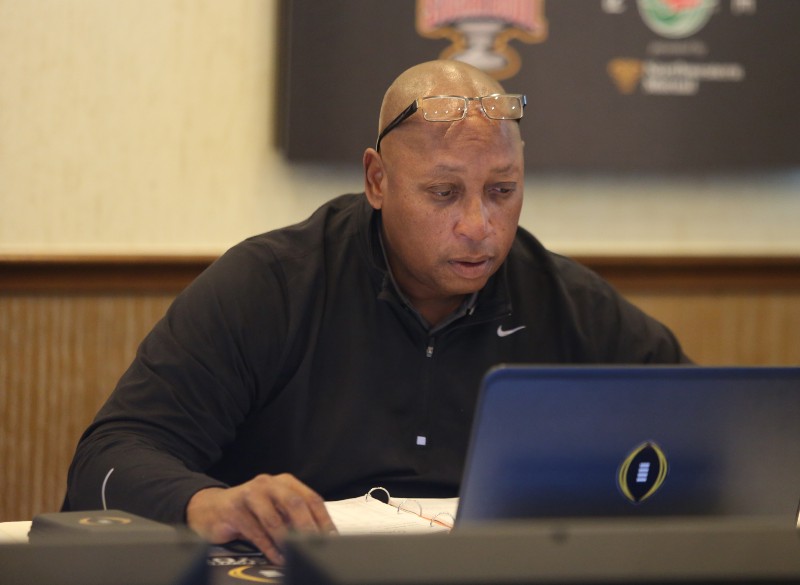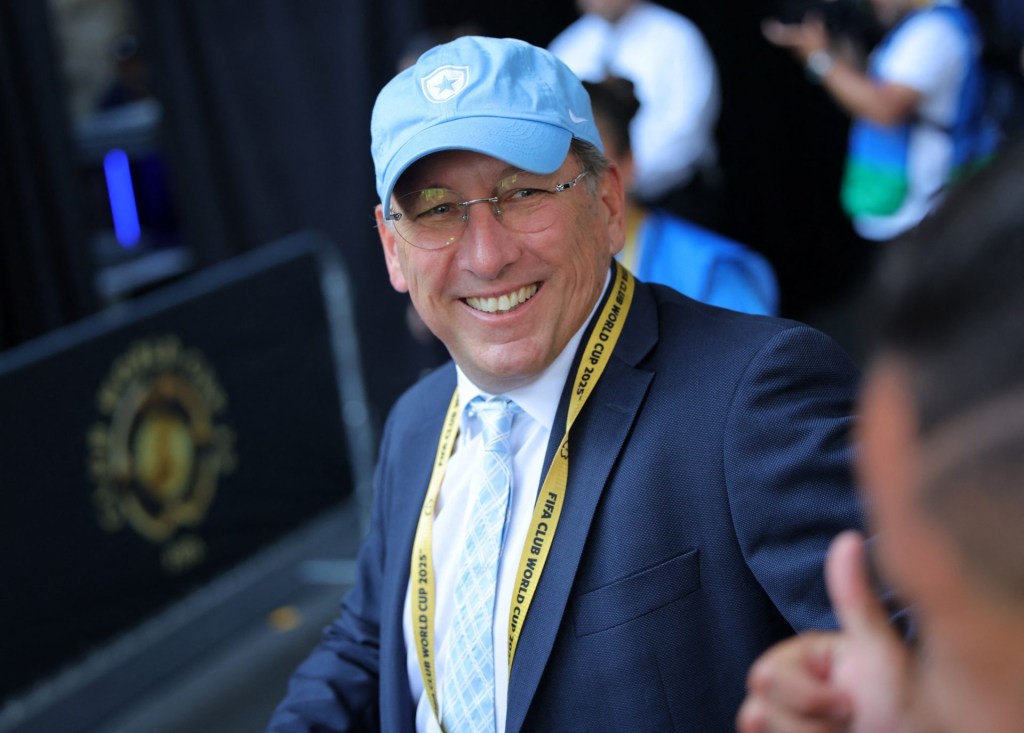Before the first CFP rankings go out, mock selections give key constituents the opportunity to see how the process works.

Nestled 20 miles northwest of downtown Dallas, the Gaylord Texan Resort and Convention Center sits on the shores of Grapevine Lake.
Hosting over 10 million visitors since it first opened its doors in 2004, the resort is home to countless conferences and events every year, none more important to the college football landscape than the deliberations of the CFP Selection Committee.
Long before the first rankings of the year come out and before any team’s hopes are dashed by shocking upsets, the College Football Playoff hosts seven different mock selections over the course of two weeks in late September.
September 18 — New selection committee members
September 19 — Student journalists
September 20 — Athletics Directors
September 21 — CFP and ESPN sponsors and others
September 26 — Conference staff members and bowl representatives
September 27 — ESPN announcers, producers and directors
September 28 — National media
During these sessions, constituents from student journalists and sponsors to Athletics Directors and national media work through intense five-hour days to get an inside look at how 1–25 will be selected come October 31.
“The mock selection exercises are an excellent way for folks to learn the committee’s processes,” said CFP Executive Director Bill Hancock.
The Tools of the Committee
The Laptop

Using technology created specifically for the CFP by Code Authority, everyone involved in the mock selections is given a laptop where they are to cast their ballots.
The data provided is then used to compare small groups of teams at a time, allowing the mock committee members to make the most informed decision possible. There are seven rounds of voting. In each of the first three rounds, the members rank three teams. After those nine teams are ranked, the process switches to adding four teams for the next four rounds. It is a disciplined and detailed process.
The Binders

The roadmap to success for the selection committee, binders are the guide to how the process works and include everything from the committee’s protocol to lists that show all bowl-eligible teams and their ranking statistics in 14 categories.
Created from scratch for each week’s rankings, the binders quickly provide all the necessary resources to make an informed decision on who is in and who isn’t.
“The binders, in combination with the statistical data that we show on monitors in the room, give the committee members all the information they need,” Hancock said.
More Than Just Numbers

To begin, each participant creates a list of the 30 teams he or she believes to be the best in the country, in no particular order. Teams who earn spots on three or more lists enter the selection pool.
Guided by Hancock, the mock selection committee goes through the rounds of electronic balloting over the next five hours.
If at any point a member feels strongly that a team is ranked too high or too low, the member can ask the group to reevaluate that team against two to five other teams that precede or follow that program. If three additional committee members agree, then the committee conducts a re-vote.
After the Top-25 rankings are calculated, the participants then place teams into the Playoff Semifinal games and New Year’s Six bowls.
When assigning teams to sites, preference goes to the №1 seed at the most advantageous site, considering travel for fans and home-crowd advantage. From there, displaced conference champions, the highest-ranked champion from a non-contract conference and the next highest ranked teams participate in select bowl games and are assigned to those games by the members.
A Team Effort

During the five-hour long sessions, five CFP staff members play a role in the organization and structure of the sessions.
When all is all said and done, the mock selections simulate the weekly process that the CFP Selection Committee goes through each week starting October 31 and ending on Selection Day, December 3.
Although the teams and the rankings are fictitious, the process of the mock selection exercises is entirely real and gives participants an opportunity to see the process from start to finish.
For media members and others, mock selections offer an inside look. For the new members of the selection committee, it is the introduction to what they will face during a six-week stretch full of debates and commentary surrounding one of the most talked-about outcomes in college football.
If the walls of the Gaylord Texan could talk, they would probably have plenty of stories to tell, but for now, the numbers do all the talking.
This piece was produced in relationship with the College Football Playoff and is part of our yearlong series, “Inside the CFP”. If you would like to learn more, check them out here.
Front Office Sports is a leading multi-platform publication and industry resource that covers the intersection of business and sports.
Want to learn more, or have a story featured about you or your organization? Contact us today.

















